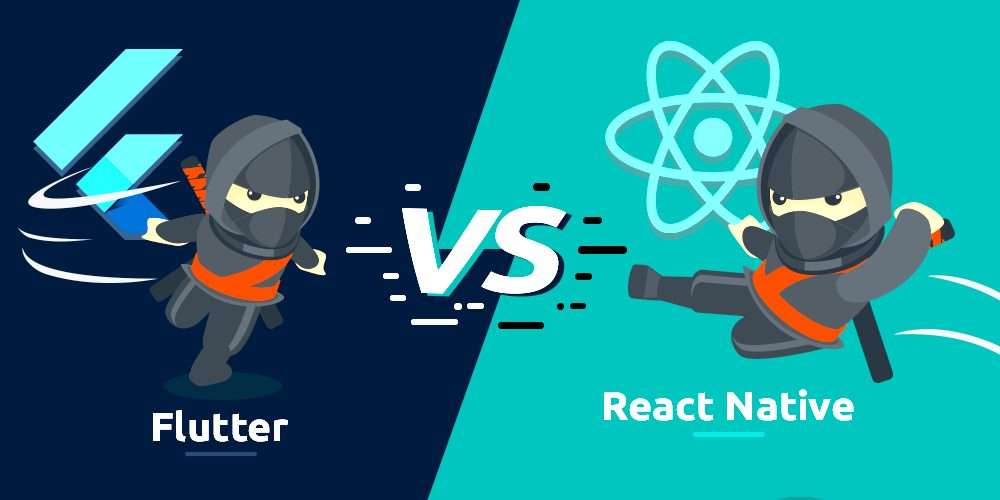If you are planning to design mobile apps, then it is incredibly vital that you make use of frameworks that can work on your behalf. In this post, we will be seeing about React Native and Flutter. These two frameworks have been around in the market for quite some time and making waves. Hence, we thought it would be a good idea to compare both and find out the real winner. The demand for mobile apps is increasing.
People are looking for new ways and methods to get things faster and save time. You could say, we are living a complicated world, and people want instant solutions to ease their lives. As a new business or start-up, you need to make use of a technology that is robust and not time-consuming.
React Native V/s. Flutter Apps Development Platform!
React Native and Flutter are development frameworks designed for start-ups to come up with solutions for clients. Facebook released the React Native development platform. As you know, Facebook is a popular social media platform.
A framework or app released by it bound to be accepted by the masses. However, it comes with tons of features and uses that enable start-ups to create apps. Not to be outdone, Google, on the other hand, released Flutter. Though it is new to the environment, it is picking up pace quite instantly. It enables developers to design native applications and cross-platform apps easily.
So, how do they hold? Are they worth your time and money?
React Native V/s. Flutter Features and Capabilities!
User Interface
There is a wide gap between React Native and Flutter as far as the user interface is concerned. Designing the block component can be a tedious task unless you have the right tools and features in your bag. React Native makes use of components that are well, quite average. When you want flawless work experience, then Flutter it is. You can easily customize your UI design. The widgets are also worth mentioning here.
Unfortunately, Flutter being a newbie lacks few components that can give you the ideal user experience. Talking about a dynamic framework coming with all the elements for a good user experience would be React Native.
Development Time
React Native offers you a reliable framework for designing an excellent mobile app. The structure is efficient and reduces the time for creating a mobile app. Not to mention, you need not spend too much on developing the app. In the case of Flutter, it consumes more time in the development process. React Native gives you with components that are ready to use and quick. The process is simple and easy to implement for your development.
Performance
Probably, the performance of both frameworks will decide a real winner. React Native and Flutter have an amicable performance for mobile app development. Both the frameworks come made with the Dart frame. Though Reach Native has more following, designing hybrid applications can be hard. The same is not in the case of Flutter. With the help of the C++ engine, designers get a smooth working experience and designing abilities. Flutter gives you better performance.
Stability
Mobile app design should be flawless. Unless it is stable, users may not want to work with it. Not to mention, stability is an important factor. Flutter can be considered as average in terms of stability. It is not ideal for large projects. React Native has the advantage that the community is massive, and members keep contributing to its development, making it reliable. It comes with several features to make it extremely attractive for users.
Customer Base
React Native has a large community and is growing each day. Thanks to the fact that Facebook has developed, it helps its cause. You can work on large projects using the framework. Some of the companies using it include Airbnb and Facebook.
Flutter, on the other hand, is still coming in terms of the customer base. Though it has made some noise in the market, it needs more time to compete with the React Native community. It may take time to be recognized in the market.
Documentation & Tool Kit
You will want to know that documentation is a tedious process. React Native is not well organized, and hence, documenting can be an issue. Flutter, on the other hand, is quite good. You can make use of them when documenting applications.
Key Takeaways
We have provided you with a list of the pointers that have been compared briefly above. It is safe to say both frameworks are useful in their way. It comes as no surprise that they are extremely popular among mobile app development start-ups. There are plus and minus in both the frameworks. For example, we read about the performance, stability, and documentation of both. Based on research and user feedback, React Native is the right choice because of its experience in the industry.
That does not mean Flutter is not good. Though it is new in the industry, you can find it being used. However, it may take some time to catch up with Reach Native and come up with matching features. With the help of Flutter, you can design excellent mobile apps and enable start-ups to make money quickly. Feel free to connect me regarding any doubts or matter of discussion on React Native and Flutter.
